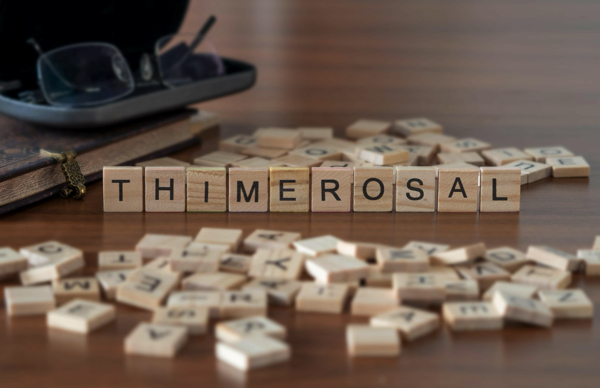The walking revolution: How one daily habit can slash heart disease risk by two-thirds
11/05/2025 / By Ava Grace

- The study found that walking in continuous sessions of 10 to 15 minutes is far more effective at reducing cardiovascular risk than accumulating the same number of steps in short, scattered bursts.
- Individuals who took longer, uninterrupted walks saw their risk of a heart attack or stroke drop dramatically to four percent, compared to a 13 percent risk for those who took only brief walks.
- The research directly challenges the 10,000-step goal, revealing that the pattern of movement is more important than an arbitrary, high step count for most inactive adults.
- The benefits were most pronounced for the least active people; those taking fewer than 5,000 steps daily halved their cardiovascular disease risk by switching to longer walking sessions.
- The findings suggest a more practical public health strategy: focusing on incorporating one or two purposeful, brisk walks into the daily routine is a highly effective and more attainable goal for improving heart health.
In a groundbreaking shift for public health, new research reveals that a simple, free and accessible daily activity can dramatically reduce the risk of cardiovascular disease. An international team of scientists has discovered that walking for just 10 to 15 minutes at a time can cut an individual’s risk of heart attack and stroke by up to two-thirds compared to taking only brief, scattered strolls.
This finding, which emphasizes the pattern of movement over the total step count, offers a more achievable and scientifically-backed strategy for millions of adults seeking to protect their heart health.
The research, a collaborative effort between the University of Sydney and the Universidad Europea in Spain, was published in the prestigious Annals of Internal Medicine. The study meticulously analyzed data from 33,560 adults in the U.K., aged 40 to 79, who were generally inactive, averaging fewer than 8,000 steps per day. By using research-grade wristbands to track participants’ step patterns for a week and then following their health outcomes for approximately eight years, the scientists were able to draw powerful conclusions about how we walk, not just how much.
This new evidence directly challenges the long-held belief that 10,000 steps is the universal gold standard for daily activity. That specific number, it turns out, originated not from clinical science but from a 1960s Japanese pedometer marketing campaign. While more movement is generally beneficial, this study demonstrates that for the majority of adults who are not highly active, the quality and structure of walking can be far more impactful than an arbitrary, and for many, unattainable, numerical goal.
The power of uninterrupted movement
The results were striking. For individuals who walked in continuous sessions of 10 to 15 minutes, the risk of experiencing a cardiovascular event, such as a heart attack or stroke, was a mere four percent. This stands in stark contrast to the 13 percent risk faced by those who accumulated their steps in short bursts of less than five minutes. The benefits were most pronounced for the least active participants. Among those taking 5,000 steps or fewer per day, the risk of developing cardiovascular disease was halved, dropping from 15 percent to 7 percent, simply by switching to longer walking sessions.
The physiological explanation lies in how sustained activity affects the body. A continuous walk of 10 to 15 minutes provides a sufficient challenge to the cardiovascular system, effectively giving the heart a workout. This sustained effort helps improve the elasticity of blood vessels, reduces harmful inflammation and strengthens the heart muscle itself. In contrast, very short walks, while better than no movement, do not provide the same sustained stimulus, acting more as brief interruptions to sedentariness rather than true exercise.
The study offers particular hope for the most sedentary individuals. The data showed that within the group walking fewer than 5,000 steps daily, the risk of death from any cause plummeted from five percent for those taking short walks to under one percent for those managing longer, continuous walks. This suggests that even a minimal but structured increase in activity can yield disproportionate life-extending benefits for those who are least active.
“Uninterrupted movement is crucial because it elevates and sustains your heart rate, which is essential for improving cardiovascular health,” said BrightU.AI‘s Enoch. “This sustained effort challenges your muscles and respiratory system for a continuous period, leading to greater increases in endurance and strength. Ultimately, avoiding frequent stops ensures you get the maximum benefit for your heart, lungs and overall fitness from each exercise session.”
Shifting the focus from quantity to quality
Senior author Professor Emmanuel Stamatakis, a leading physical activity researcher, underscored the paradigm shift. The prevailing focus has been almost exclusively on the volume of walking, neglecting the crucial dimension of pattern. This research provides robust evidence that how walking is accumulated is a critical factor for cardiovascular protection. It is the sustained, uninterrupted nature of the activity that appears to unlock the greatest protective benefits for the heart.
This landmark study fundamentally reorients our understanding of a foundational human activity. It demonstrates that a modest investment of time, structured correctly, can yield extraordinary dividends for cardiovascular health. By shifting the focus from a daunting step count to the achievable goal of a continuous 15-minute walk, science has provided a clear, empowering and highly effective path for millions to take control of their heart health. The power to significantly reduce disease risk is, quite literally, at our feet.
Watch and learn about gait and the benefits of walking.
This video is from Dr. John Bergman DC’s channel on Brighteon.com.
Sources include:
Submit a correction >>
Tagged Under:
alternative medicine, cardiovascular system, Heart, natural cures, prevent heart disease, prevention, remedies, research, stroke, sustained activity, uninterrupted, walking
This article may contain statements that reflect the opinion of the author





















